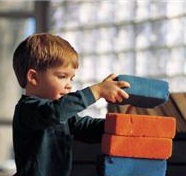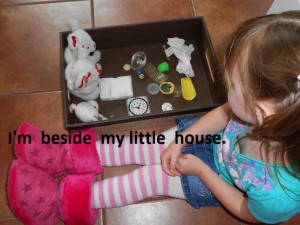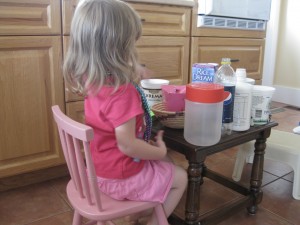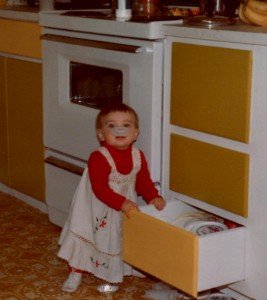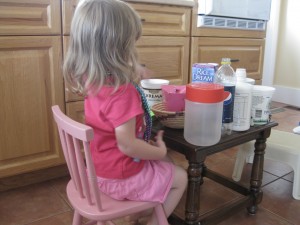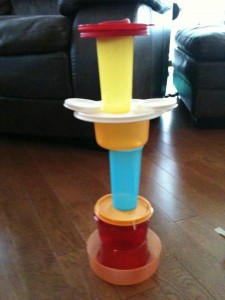All month long, plays-of-the-day for early fun and learning and kindergarten readiness have started with the letter p, because April starts with a p. Today’s post is making a magic potion.
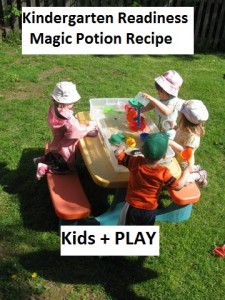 What kids use for making a potion determines what containers they will need and where they make it. Potions with sand, mud, and rocks are maybe best concocted outside, where there’s no worry about a mess. Twigs, leaves, pine cones, flower petals that are On the ground not still On the flowers, grass, and weeds make a nature potion for elves and fairies.
What kids use for making a potion determines what containers they will need and where they make it. Potions with sand, mud, and rocks are maybe best concocted outside, where there’s no worry about a mess. Twigs, leaves, pine cones, flower petals that are On the ground not still On the flowers, grass, and weeds make a nature potion for elves and fairies.
If the weather is nice, kids can play with a pail, dishpan, or water table outside. You may have some corks, plastic letters and numbers, play foods, and water bottles with different colors of water for adding a spoonful or drop at a time. A bit of dish soap and a whisk can make wonderful bubbles. For inside play at a kitchen sink or in the bathtub, smaller containers might work better. A quick hunt in the recycling will usually locate a few bottles and containers of different shapes and colors, and maybe a plastic eye dropper.
For kids that are a little older, the pantry may have some items such as a spoon or two of pasta shapes, a shaker of sprinkles, or some outdated spices. Spread newspaper on the counter, table or floors. Turmeric that is years old would probably still stain.
When it comes to kindergarten readiness, the magic potion ingredients are the time and opportunity to play. Kids who explore and discover at home will be eager to do that in the classroom. Kids who can wonder about what they see, hear, smell, touch and taste in their world, will do that at school. Children’s environments will have opportunities to talk, to interact, to count and notice numbers, and more as they play. That’s the magic potion for kindergarten readiness and beyond! What magic is happening at your house?

